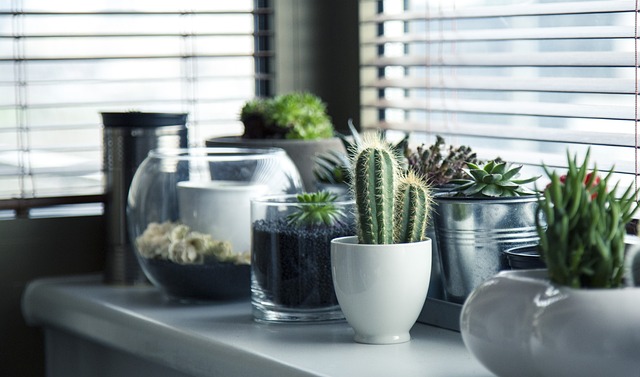Gardening is a rewarding hobby, but it can also be a challenge, especially when dealing with harsh weather conditions. Whether you live in a dry desert climate or a wet and rainy area, the key to a successful garden is understanding how to work with the elements.
This guide, “Growing in Any Weather: A Guide to Climate-Specific Gardening,” is here to help you do just that.
In this article you will learn tips and tricks for gardening in any climate, from selecting the right plants to proper watering and maintenance techniques.
With this guide, you’ll be able to create a beautiful and thriving garden no matter what the weather has in store.
So whether you’re a seasoned gardener or just starting out, let’s dive into the world of climate-specific gardening and start growing!
Understanding Your Climate

- Understanding the basics of climate zones and microclimates.
- Identifying the average temperature, precipitation, and sunlight levels in your area.
- Understanding the effects of altitude, topography, and wind patterns on your local climate.
- Researching historical weather data and long-term climate trends for your area.
- Utilizing online resources such as weather websites and local gardening groups for information on your specific climate.
- Consulting with local experts, such as Master Gardeners or Extension Agents, for advice on gardening in your area.
This section would explain the importance of identifying and understanding the climate in your area in order to make informed decisions about gardening.
It would provide information and tips on how to gather data about the weather condition in your area and how to use this data to make decisions on what plants to grow and how to take care of them.
It would also provide resources and expert advises on where to find information and support for your specific climate.
Plant Selection: Choosing the right plants for your climate

When it comes to gardening, one of the most important decisions you’ll make is choosing the right plants for your climate. Not all plants thrive in every climate, and selecting plants that are well-suited to your area will ensure a healthy, beautiful garden.
To start, it’s essential to understand the basics of climate zones and microclimates. Climate zones are geographic areas that share similar weather patterns, while microclimates refer to small, specific areas within your garden that may have different conditions than the surrounding area.
For example, a north-facing slope may be cooler and moister than the rest of your garden. By understanding your climate zones and microclimates, you can select plants that are well-suited to the specific conditions in your area.
When choosing plants, it’s also important to consider the average temperature, precipitation, and sunlight levels in your area.
Some plants, such as cacti, thrive in hot and dry climates, while others, such as ferns, prefer cooler and moister conditions.
Similarly, some plants need full sun to thrive, while others prefer shade. By selecting plants that are well-suited to the average conditions in your area, you’ll be setting them up for success.
Altitude, topography, and wind patterns can also affect the climate in your area. High altitude areas tend to be cooler, while windy areas can be dry and windy.
These factors should also be considered when choosing plants.
Researching historical weather data and long-term climate trends for your area can also be helpful in selecting the right plants.
For example, if your area has seen a trend of drier summers in recent years, you may want to choose drought-tolerant plants.
Online resources such as weather websites and local gardening groups can also provide valuable information on your specific climate.
Watering and Irrigation

Watering and irrigation are critical aspects of gardening, and the techniques you use will depend on the climate in your area.
- In dry climates, for example, it’s important to conserve water and use irrigation methods that minimize evaporation.
- In wet climates, on the other hand, the focus may be on preventing waterlogging and ensuring proper drainage.
First, it’s essential to understand the precipitation levels in your area.
In regions with low precipitation, such as deserts, it’s important to conserve water and use irrigation methods that minimize evaporation.
Drip irrigation systems, for example, deliver water directly to the root zone of plants, reducing evaporation and runoff. Mulch can also be used to retain moisture in the soil and reduce the need for frequent watering.
In regions with high precipitation, such as rainforests, the focus is on preventing waterlogging and ensuring proper drainage.
Using raised beds and incorporating drainage systems can help prevent water from pooling around the roots of plants.
It’s also important to select plants that are well-suited to the wet conditions in your area.
The time of day you water your plants can also be important, especially in hot climates.
Watering in the early morning or late evening can help prevent evaporation and ensure that the water reaches the roots of the plants.
In contrast, watering during the heat of the day can cause the water to evaporate before it reaches the roots.
It’s also important to adjust watering according to the weather condition, if it’s a rainy season you may need to water less.
In addition, it’s essential to monitor the moisture level of the soil and adjust watering accordingly.
Using a moisture meter or simply sticking your finger in the soil can provide an indication of whether it’s time to water.
Soil Management

Soil management is an essential aspect of gardening, and understanding the soil types and conditions in your area is key to creating a healthy and thriving garden.
Different soil types have different characteristics, such as pH levels, nutrient content, and drainage, that affect the growth of plants.
Understanding these characteristics can help you select plants that are well-suited to your soil and make informed decisions about fertilization, irrigation, and other aspects of gardening.
The first step in understanding your soil is to have it tested. A soil test will provide information about the pH level, nutrient content, and other characteristics of your soil.
This information can be used to determine which plants are well-suited to your soil and which may struggle to grow.
For example, if your soil is very acidic, you may want to avoid plants that require a neutral pH, such as hydrangeas, and choose plants that thrive in acidic soil, such as rhododendrons.
Another important aspect of soil management is understanding the drainage in your area.
Some soils are well-draining, while others hold water and can lead to waterlogging and root rot.
Understanding the drainage characteristics of your soil can help you select plants that are well-suited to the conditions in your area.
It’s also important to consider the texture of your soil. Clay soils are dense and heavy, while sandy soils are loose and well-draining.
Loam soils are a balance of clay, sand, and organic matter and are ideal for gardening. Knowing the texture of your soil can help you understand how it holds water and nutrients and how best to amend it for optimal growth.
Amending the soil with organic matter can also be beneficial.
Compost, well-rotted manure, and other organic materials can improve the structure and fertility of the soil.
Maintenance and Protection: Strategies for protecting your garden
Maintaining and protecting a garden from extreme weather conditions is essential for ensuring a healthy and beautiful garden. From harsh summers to heavy rains, there are many strategies you can use to protect your plants and keep them thriving.
One of the most important strategies for protecting your garden from extreme weather is mulching. Mulch helps to retain moisture in the soil, which can be particularly beneficial during hot and dry weather.
Additionally, mulch can help to insulate the soil, which can protect roots from freezing during cold weather.
Another important strategy for protecting your garden from extreme weather is selecting plants that are well-suited to your climate.
For example, in hot and dry climates, choosing drought-tolerant plants can help to reduce the need for frequent watering and minimize stress on the plants.
Similarly, in cold climates, selecting plants that are hardy and can withstand frost can help to protect your garden from damage.
Proper pruning and training of plants can also help to protect them from extreme weather conditions.
Properly pruned trees and shrubs are better able to withstand strong winds and heavy rains, while training plants to grow in a specific direction can also help to protect them from damage.
Proper irrigation is also important for protecting your garden from extreme weather conditions. In dry climates, it’s important to conserve water and use irrigation methods that minimize evaporation.
Similarly, in wet climates, it’s important to ensure that your garden is well-drained to prevent waterlogging.
Finally, protecting your garden from extreme weather conditions also includes monitoring the weather forecast and taking action when necessary.
For example, in the case of a forecasted heavy rain, you may want to move potted plants to a covered area or protect your garden with tarps.
Climate-Specific Challenges
Climate-specific challenges are a common issue for gardeners, and dealing with them can be a major part of gardening in different climates.
Some of the most common climate-specific challenges include heat, drought, and frost.
Understanding these challenges and how to deal with them is essential for maintaining a healthy and beautiful garden.
Heat is a common challenge in many regions, and it can be especially challenging for plants that are not well-suited to hot climates.
To deal with this challenge, it’s important to select plants that are heat-tolerant and that can withstand high temperatures.
Mulching, proper irrigation, and shading can also help to keep plants cool and reduce stress during hot weather.
Drought is another common climate-specific challenge, and it can be especially challenging for regions with low precipitation.
To deal with this challenge, it’s important to select plants that are drought-tolerant and that can survive with minimal water.
Mulching, proper irrigation, and using water-saving techniques such as drip irrigation, can also help to conserve water and reduce the need for frequent watering.
Frost is a common challenge in colder climates, and it can be especially damaging to plants that are not well-suited to cold temperatures.
To deal with this challenge, it’s important to select plants that are hardy and can withstand frost.
Proper irrigation, proper mulching, and using frost protection methods such as covering plants with frost blankets, can also help to protect plants from damage during frosty weather.
It’s also important to monitor the weather forecast and take action when necessary.
For example, if a frost warning is issued, you may want to cover your plants with frost blankets or bring potted plants indoors.
Add Some Little Decoration for Fun

Adding a little decoration to your garden can be a fun and creative way to personalize your outdoor space.
Not only do decorations add personality to your garden, but they can also serve as functional elements, such as birdhouses and feeders. One popular and playful decoration for gardens are gnomes, but there are many other ideas to decorate your garden.
One option is to use garden statues. Garden statues can be made from a variety of materials, such as stone, metal, or wood. They can be used to add a touch of elegance to your garden or to create a sense of whimsy.
For example, you could place a stone statue of a cherub in a flowerbed or a metal sculpture of a dragon in a rock garden.
Another option is to use garden ornaments. Garden ornaments can be made from a variety of materials, such as glass, ceramic, or metal. They can be used to add a touch of color to your garden or to create a sense of movement.
For example, you could hang a glass suncatcher in a tree or place a ceramic wind chime near a garden path.
You can also use lighting to decorate your garden. Outdoor lighting can be used to highlight specific areas of your garden or to create a sense of ambiance.
For example, you could place solar-powered lights along a garden path or hang a chandelier from a tree.
Conclusion
Gardening in different climates can present its own unique challenges, but with a little knowledge and preparation, you can create a garden that thrives in any weather.
Understanding your climate, selecting the right plants, proper soil management, irrigation and maintenance strategies, and appropriate protection methods can all help ensure a healthy and beautiful garden.
Additionally, incorporating some fun and creative decoration ideas like gnomes, statues, ornaments, lighting, and plants can add personality and charm to your outdoor space.
By following these guidelines and utilizing the resources and expert advice available in your area, you can create a garden that will thrive in any climate.
Author Bio
I am Jim, a content writer and a passionate gardener. With years of experience in the industry, I have gained a wealth of knowledge and expertise on gardening that I like to share with others through my writing.
My articles provide valuable tips and insights for readers of all levels, whether you are a seasoned gardener or just starting out. My goal is to help you create a beautiful and thriving garden by providing information on topics such as understanding your climate, selecting the right plants, soil management, and maintenance strategies.
You may also like to read
Some Ways to Get Rid of Weeds in Your Grass (Lawn) Naturally






